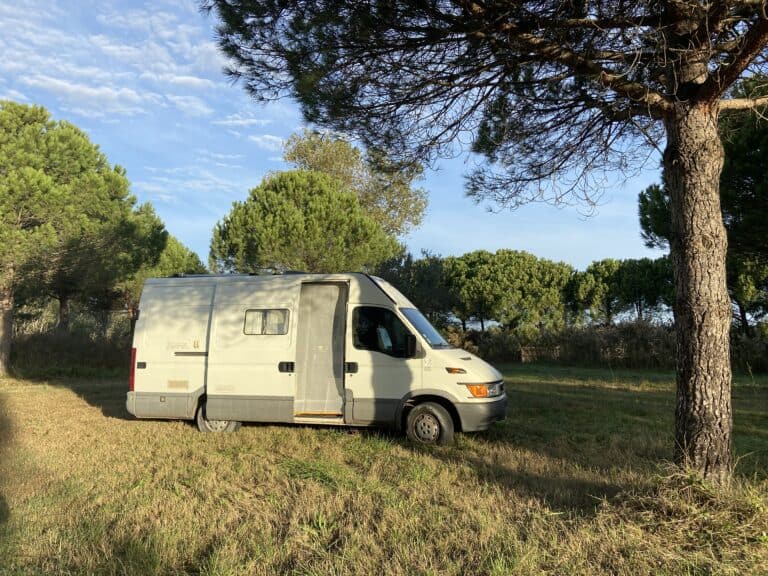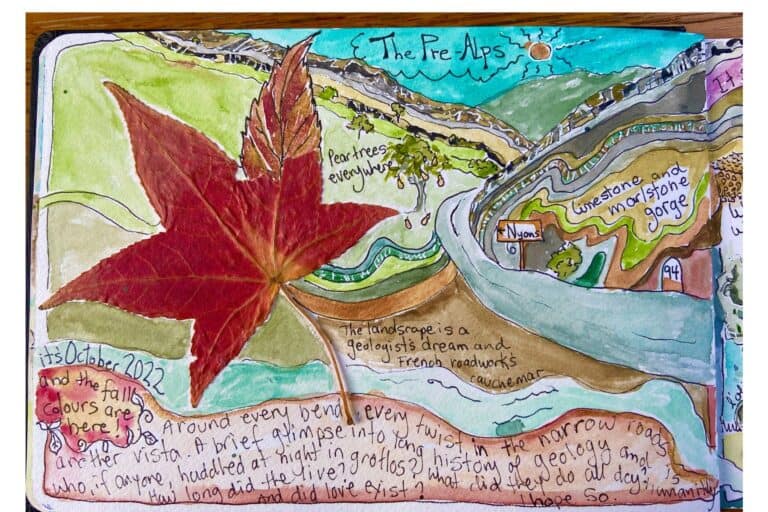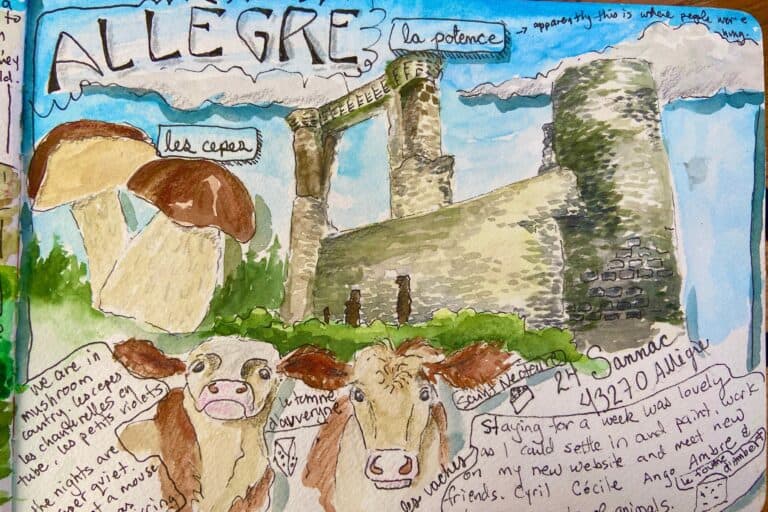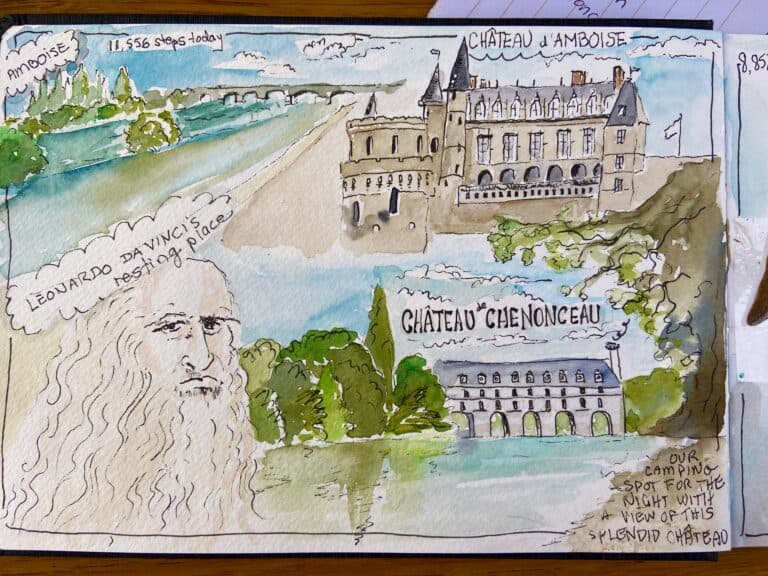What does France look like?
When I first thought about France oh so many years ago, my only point of reference was a vague idea of Paris being kind of in the middle with lots of girls in red lipstick and rich people sunning themselves on the French Riviera. I was missing about 95 % of the country and I suspect this may be the case for many people considering a van trip, or any trip really, around France.
Today’s “public service announcement” is all about France, what it looks like how it’s divided up administratively, and even some handy dandy tips for planning a motorhome trip. So there.
How big is France?
Forget about square kilometres and all that jazz. Think of it this way. France is about ⅔ the size of British Columbia and just a bit smaller than Texas. For you numbers nerds, then here’s a link to France on Wikipedia so you can fill yer berets. https://en.wikipedia.org/wiki/Geography_of_France
How long does it take to drive from one end of France to another?
Suffice it to say that it’s big for a European country and tiny compared to Canada or the USA. People here still cannot fathom the idea that you can drive for ten hours or more and still be in the same province. At that rate, you could pretty much cross the entire country of France.
If you only use paid autoroutes, you can generally drive from one end to another in around 12 hours; maybe a bit longer if you stop for lunch and such. If you want to plan your itinerary, you simply cannot account for all the twists and turns, speed bumps, roundabouts and traffic. We drive relatively slowly to maximise fuel consumption and try not to destroy the van at the same time on bumpy roads.
If you don’t use paid toll roads, it will probably take closer to 15-20 hours. In the two months we’ve been on the road, we haven’t once used a toll highway. From our place in Normandy, we usually cross France in two days. We start out around 9am and drive until around 1pm. We stop and have lunch on the road and then drive another three or four hours before we stop somewhere to camp. By the next morning or early afternoon, we have pretty much traversed the entire country. I’d say that’s pretty good. Do that in B.C. and you’ll get to Revelstoke. Ok, I’m just kidding but living in Canada really does merit the phrase, ” Are we there yet?”
What does France look like?

Continental France is shaped like a hexagon and it’s often referred to as such. Of course, there are other parts of France that are known as “outre mer” of colonialized countries that are French territory. We won’t be talking about those today.
What is the population of France?
France has around 65 million people in the hexagon with an additional 3 million or so living overseas. There are also “undeclared” residents, from refugees to clandestine entries. I hate the word “illegal alien” as if somehow we weren’t all the same species and don’t all live on the same tiny planet spinning around in the universe.
Alas, existential questions aside, the majority of the population lives around Paris, which is situated just above the geographic middle of France. It has massive suburbs and a lot of highrise apartments with a huge population density.
Marseille, Lyon, Toulouse, Nice, Nantes, Montpellier, Strasbourg, Bordeaux and Lille are the other largest cities scattered across the country.
In between the largest cities are thousands of medium sized towns, followed by villages and then hamlets, which are simply a tiny cluster of houses often without any commerce at all.
What is France’s geography?

France has flat prairies where lots of agricultural activities happen and big mountains. Below is a bit of an explanation in my oh-so-professional geographical way:
Middle of France
The upper middle and lower west parts are called “bassins”, or basins, low lying flatlands with some rolling hills and the odd mountain. You can see that France’s mighty rivers empty into these basins, or deltas and over time, they’ve formed sedementary rock.
There are two areas known as “Massifs,” or plateaus; one in the Brittany area on the west coast about half way up the country and the other called the “Massif Central” which is in the lower middle part. They have bigger mountains and some chains of extinct volcanos.
As a result, the land is very rich and this area is known for their spectacular cheeses. Think, Cantal, St. Nectaire, Mont D’or and Roquefort. It’s always better when you can eat cheese, especially with a dry subject like geography; ahem.
Western and South Western sides
On the bottom towards the left side of the map are the Pyrenees, a big, rugged mountain chain that goes from the mediterranean sea across to the Atlantic, making it a convenient barrier/divider between Spain and France. On the France side it’s green, on the Spanish side its dry and brown. Go figure.
Southern part
On the bottom next to the mediterranean sea is the flat area where the Rhone river empties and is famous for salt production, ports, fishing. Think Marseille, salt flats, rice and Camargue horses.
Eastern Part
On the right side are the Alps. The roads can be trecherous, glaciers are melting and there are fancy schmancy ski resorts. It’s beautiful and they make some of my favourite cheeses on the planet.
Tomme de Savoie and Tomme de Montagne being two of my alltime….nah, scratch that. I could spend 5 years of my life trying a different cheese everyday and each day I’d discover a new favourite.
Northern and Eastern parts
Go up higher and you get the Jura and les Vosges which are other mountainous regions. Above that you’re into the borders of other European countries.
Paris
Paris and its suburbs kind of take up the upper middle of France. You don’t need to know much more than that. Oh, well, ok, the Champagne region is nearby too, which is pretty cool. One day I hope to go there because I have a friend who’s parents make Champagne, but I don’t think they have as fancy a house as in Emily in Paris.
Coastlines
That’s about it. One thing you may kinda, sorta notice is that there’s a lot of water around France. That’s important because there are ferry boats that come from all over the place, so if you’re planning on shipping your van to France, it may just be possible. When my parents came to Europe in 1999 with their VW Westfalia, they took a boat from Georgia in the USA to Rotterdam, which is not in France but rather, in the Netherlands.
The long coastline also means there are a lot of amazing places to visit if you like ocean sports, surfing, kite surfing, snorkling and diving, sailing and fishing. The challenge is that many of the touristy areas are truly overrun at holiday times and finding parking can be a nightmare.
How is France divided?

Regions and Departments +++
France is divided up by 12 regions, with each of those regions being divided up into 96 different departments. But don’t quote me on that because at one point Normandy was one region, then it got split up into two and now it’s back to being one happy region.I looked up some information on France and have seen, 12, 18 and 19 regions, so who knows where we are at in 2022?
Click this link to see a good map https://www.regions-departements-france.fr/
There are further divisions but for the purposes of van life, I’d say that it’s more important to know generally what region you’re in and which departments happen to be within each region. This is because when you go to a tourist office in a particular town, they will likely have maps for the entire region, including flyers for each department. On the map above, you can see what departments are within each region by the black dots and smaller names.
When is the best time to travel around France in a motorhome?
We chose the fall because of a few reasons:
- Fewer tourists. Some places are so overrun with tourists that you literally can’t move. I once went to a place in Dordogne called Collonges la Rouge, known for its amazing red architecture. It was so packed with tourists eating, eating and eating, that it was hard to admire the architectural masterpiece of this town.
- Fewer tourists means more free parking spots. At the end of October and sometimes even before, there are lots of towns that wrap up their parking meters in plastic and parking becomes free.
- Many parking lots have height barriers, meaning that off season, gigantic parking lots have three cars in them while motorhome drivers are constantly looking for a place to stay. I’ve seen barriers as low as 1.9 meters and up to 2.5 meters. Sometimes they’re open during the day but close them at 6pm so if you’re inside, you’re stuck until the morning. It’s a real pain the butt, especially when there are big signs saying that the parking is forbidden for “camping cars.” That is controversial in itself because all signs forbidding entry or what have you should be marked with a prefectural number showing its legality. No number, it’s essentially an illegal sign put up by pissy locals tired of seeing convoys of campervans blocking their streets. I get it, but come on. We generally do not stay in areas with those signs as we really don’t want to have issues with local police banging on the door in the middle of the night and having an arguments about whether it’s legal or not.
- Travelling off season means that you’ll not likely hit massive traffic jams on the autoroute. One tip, though, is if you’re heading towards Paris at the end of a holiday or long weekend, there will be traffic jams of Parisians trying to make it home and those can be brutal. Better to travel towards Paris outside of holiday start and end dates.
- Lower prices; sometimes. In tourist areas, people jack up the prices, so travelling off season can be a bit cheaper. That’s what everyone says, but given my gasps at the prices for a three course, microwaved meal in Cassis in the south of France puts into doubt that theory.
- For us, the weather in October and November in the Southern regions of France was warm, sunny and up to 23C. We are now in Spain, just south of Barcelona and the weather report for tomorrow is up to 23C. Yay.
What are some tips for travelling through France in the fall?
- Snow tires!
- If you’re going to do the mountains, beware! There are many departments that require snow tires or at the very least, chains, after November 1st. I do not believe that all season tires are acceptable. Some of the roads are so dangerous that I wouldn’t want to even try them, especially given that our truck is only a two wheel drive. Given the size of some of the rigs I’ve seen toodling around France, you’d have to be stupid or very brave to go up those mountain roads, especially when you come face to face with another vehicle and have to actually back down to a turn out in order to let them pass. No thanks.
- Historical Town Centres
- Many towns have newer outlying construction and a historical town centre which are not accessible by motorhome. You must heed these rules and never drive into a historical town centre if you see a round sign with a red circle and a camper van drawn on it. Why? Some of these towns have street so narrow that if your motorhome is too long, you will get stuck. We ignored three separate signs forbidding passage on a street and got stuck. Fortunately, we managed to squeeze past without damaging anything, but if our van had been any longer than 6 meters, we would have really been in la merde.
- Speed Bumps
- Driving directly through a town will also mean a lot of speed bumps. The French are in love with undercarriage-destroying speed bumps and roundabouts, so beware how quickly you travel. Many towns now have ring roads that allow you to avoid going through town centres and we generally take them unless I need to buy bread.
- Closed Campsites
- Be aware that many of the campsites close at the end of September or October. There is a great site that you can look up that shows sites that are open all year round. Go to www.campingfrance.com and scroll down to the different regions and click on where you want to go. You might also want to check what are known as “Aire de Camping” which are areas set aside for motorhomes. Sometimes they are paid, sometimes they are free and they’re usually jam packed. We generally steer clear of them because we’re not fans of having someone parking less than two meters on either side of us.
- Waste disposal. You will have to empty your chemical toilet, drain grey water, get rid of garbage and fill up the water tank. Do not, I repeat, DO NOT use the hose provided right next to where people drain their waste water or toilets. I have seen people let the hose drop right onto the ground, touching the disgusting waste water draining into the grill. Bring your own hose and don’t let it touch anything. An App like https://park4night.com/ has a free version and you can set it up to show you where you can drain grey and black water. I’ve used it a lot in France both for this service and to find places to stay. There is a site called https://www.bornes-eurorelais.fr/ that should show you where you can do all this but I haven’t found it all that accurate.
- Spain
- Now that we are in Spain, it’s a different story. Luckily, we discovered that at some autoroute gas stations, there is a sign on the highway several km from the exit that show a campervan draining waste water. We did that today and it’s different from France. You drain your waste water and chemical toilet directly into the grill. There is no separate toilet disposal, and frankly, it is a much cleaner system that what I see in France because a lot of the water jets spray and splash all over the place, sending errant fecal matter flying every which way.
- Shopping Times
- Do you major grocery shopping around noon at supermarkets. There are fewer people because the French are all having lunch. In the same vein, pharmacies are usually closed on Sundays, some on Mondays and most small shops, butchers, bakeries and small grocery shops are not open on Sunday or Monday. We always make sure we have food for at least until Tuesday so that we don’t run out of anything from Saturday night to Tuesday morning.
- Pharmacies
- Most pharmacies are closed on Sundays and some are even closed on Mondays. That said, if it’s an emergency, you need to look up Pharmacie de Garde, which is a pharmacy that stays open on Sundays. They rotate so it’s never the same one and sometimes it’s a real pain to go and buy something. I would suggest bringing all the medical/health supplies you may need if at all possible.
- If you’re European, get a European medical card. It means that you can get reimbursed by your own medical service at home. Find out more here. www.ec.europa.eu It’s not a substitute for your own medical travel insurance so do your research.
I’m sure I have more tips but I’m tired and we are parked at a beach in Spain and it’s nighttime. If you have any questions, I’ll be sure to try to answer them or point you in the best direction I can in order to get the information.
Now that you’ve been introduced to France, some of my future posts will cover what regions we visited and more specifically, what departments. Be well friends and happy and safe travels.
Bisous,
Dana






Love this..,some fascinating France facts ❤️
I know, it’s really interesting. That said, I’m not much of a facts girl, but I do remember how I feel, and sometimes there are odd bits and pieces that I remember. Sometimes the visits go so fast that I vow to research more about the places I’ve visited, when I have the time.